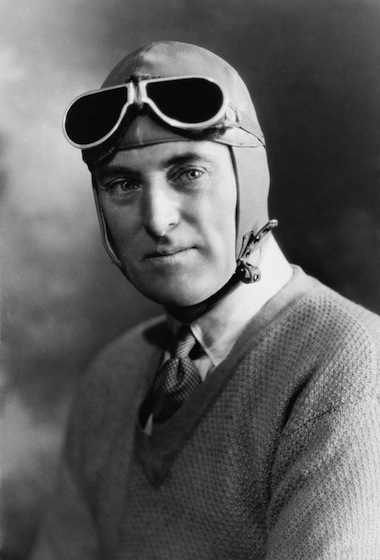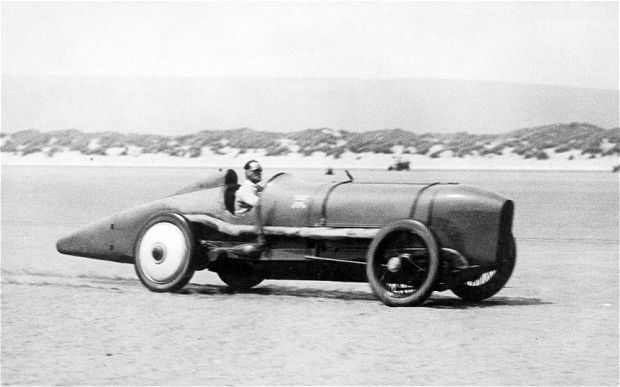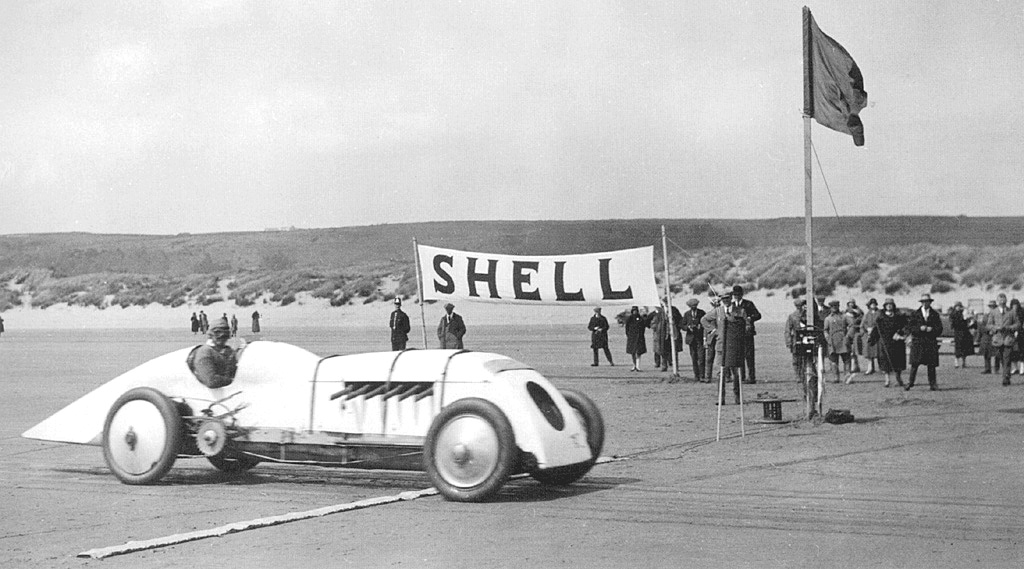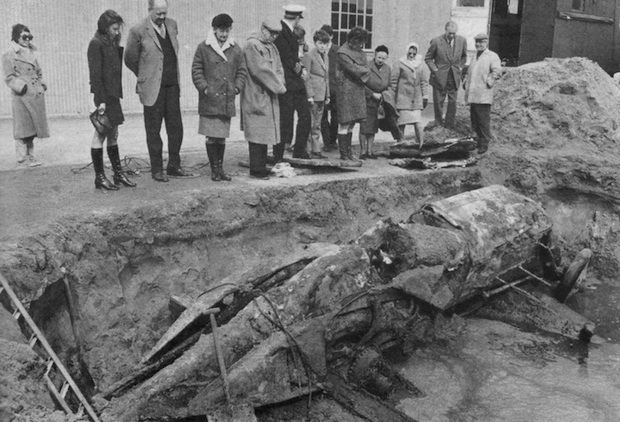British actor Idris Elba has added “record holder” to his list of accomplishments, breaking the land speed record of his home country while filming the upcoming BBC documentary Idris Elba: No Limits.
The 42-year-old took to Pendine Sands in an unmodified Bentley Continental GT, a fittingly British machine fueled by a 6 litre, twin-turbo W12 engine with a maximum speed potential of 220 mph. Facing changing tides and less than stellar conditions, Elba clocked a flying mile of 180.36 mph; shredding the 88-year-old record of 174 mph and cementing his place in the fascinating history of Pendine Sands.
The United Kingdom is rarely celebrated for its dreary shores, but Pendine Sands is a special exception. This seven-mile stretch of sand runs from the Carmarthean Bay to the south coast of Wales and has played host to racing events since the early 1900s.
But in the 1920s, it became specialised as a natural runway with a specific purpose: the flying mile speed record.
For the uninitiated, a flying mile allows the driver to achieve maximum speed before entering the timed zone, providing an opportunity for maximum record potential. But as attempts for the world land speed record increased dramatically through the 1920s, it became obvious that few roads in the world could support such speeds.
Adequate build up and breaking distance meant a straight stretch of five miles was necessary to break the mythical 150 mile barrier: a logistical impossibility for almost every major road at the time.
Pendine Sands provided the perfect solution to the problem. It was a natural speedway with a straight, flat surface and no obstructions in the entirety of its seven miles. It was here that Sir Malcolm Campbell would first attempt the world land speed record in what would eventually become his iconic vehicle, the cheerfully dubbed Blue Bird.
Malcolm Campbell was a racing icon for the ages. He was a swashbuckling former captain of the Royal Flying Corps, a gentleman daredevil with a fierce sense of determination. His unrelenting bravery as a pilot equipped him for the dangers of the Pendine Sands in more ways than one. The Blue Bird was a modified Sunbeam 350HP powered by an aeronautical engine. It was a beautiful piece of motoring machinery, one more akin to a wingless fighter plane than a modern racing car.
On November 25, 1924, Campbell took to Pendine Sands and recorded a time of 146.15 mph, narrowly eclipsing the previous record held by British racer Ernest Eldridge. Not content with such a close call, Campbell raced Pendine the following year, shattering his previous record and becoming the first man to break with 150 barrier with a speed of 150.84 mph.
Campbell had pushed the 18-litre, V12 engine of the Blue Bird to its very limits; never, the racing world believed, could such a record be broken.
It lasted less than a year. Campbell had unwittingly set off an arms race between himself and another man of equal determination; an escalating battle for the Pendine Sands that would ultimately end in tragedy.
John Parry-Thomas was a racing driver and chief engineer for Leyland Motors, a Welshman with a long-held desire to become the fastest man on the planet. And to achieve his dream, the engineer had crafted a machine specifically designed to decimate the speed of the Blue Bird.
Her name was Babs, and she was a beast: 27 litre fuel intake, V12 Liberty aero engine, with enough horsepower to make the Blue Bird seem like a toy in comparison. Parry-Thomas tore across the Pendine Sands on April 28 of 1926 and obliterated every expectation. He posted a speed of 170 mph, close to 20 miles faster than Campbell.
It was a leap unheard of in the land speed record, enough to break the spirits of even the most competitive men. But Parry had underestimated the unyielding determination of Campbell. The former record holder refused to be denied his place in the record books, and immediately began work on the Blue Bird Mark II: a demon in a deceptively polite visage.
It was a demon with a 22.3 litre fuel intake, Napier Lion aero engine, and ferocious horsepower; all contained in the elegant framework designed by Armherst Villiers, the British engineer who would find later fame with the Bentley Blower, a vehicle so debonair it was driven by James Bond in the Ian Fleming novel Casino Royale.
The reborn Blue Bird scorched across the Pendine Sands at 174.88 mph, upping the stakes in the struggle between Campbell and Parry-Thomas and ultimately setting the stage for tragedy.
On 3 March, 1927, Thomas-Parry took to the Pendine Sands one last time in a desperate gamble to reclaim his lost mantle. But as Babs reached the triple figure mark, disaster struck and the machine tore apart, spiralling into the sands and killing her driver instantly.
Speculation ensued as to what caused the fatal accident. Rumours swirled of a sheared drive train, cutting through the bodywork and decapitating Parry-Thomas in a gruesome end. Subsequent investigations revealed less grotesque but no less tragic demise: the trauma of the crash had instantly killed the engineer as Babs tore as the Pendine Sands in speeds exceeding 100 mph.
The crash cast a somber note on the natural speedway. Babs was buried along the shore, her wreckage left undisturbed until it was finally exhumed in 1969.
Campbell went on to become one of the most revered names in racing, holding the world land speed record an astonishing nine times. He was the first man to break the 250 mph mark; the first man to break the 300 mph mark.
He was eventually knighted for his contributions to the annals of speed history, but Sir Malcolm Campbell never raced the Pendine Sands again, opting to compete in the American spaces of Daytona Beach and Bonneville Salt Flats.
The British land speed record remained untouched for 88 years until the efforts of Idris Elba this month. In the aftermath of his victory, the actor was quick to acknowledge the onetime king of the Pendine Sands:
“It was an honour to have taken on the challenge, and to successfully follow in the footsteps of the illustrious Sir Malcolm Campbell.”
But with the feat, Elba has unleashed a wealth of speculation across the globe. Has the actor unwittingly opened a new arms race across the Pendine Sands, or will his record stand for another near century? Time can only tell. But if there is only one aspect to be taken away from this astonishing accomplishment, it’s this: Idris Elba is a more impressive man than you. Don’t bother arguing. He just is.














